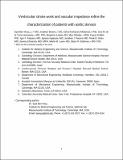| dc.contributor.author | Ben Assa, Eyal Benjamin | |
| dc.contributor.author | Brown, Jonathan | |
| dc.contributor.author | Keshavarz Motamed, Zahra | |
| dc.contributor.author | De La Torre Hernandez, Jose Maria | |
| dc.contributor.author | Leiden, Benjamin Bradford | |
| dc.contributor.author | Olender, Max | |
| dc.contributor.author | Kallel, Faouzi | |
| dc.contributor.author | Palacios, Igor F. | |
| dc.contributor.author | Inglessis, Ignacio | |
| dc.contributor.author | Passeri, Jonathan J. | |
| dc.contributor.author | Shah, Pinak B. | |
| dc.contributor.author | Elmariah, Sammy | |
| dc.contributor.author | Leon, Martin B. | |
| dc.contributor.author | Edelman, Elazer R | |
| dc.date.accessioned | 2019-12-30T22:42:47Z | |
| dc.date.available | 2019-12-30T22:42:47Z | |
| dc.date.issued | 2019-09 | |
| dc.date.submitted | 2019-02 | |
| dc.identifier.issn | 1946-6234 | |
| dc.identifier.issn | 1946-6242 | |
| dc.identifier.uri | https://hdl.handle.net/1721.1/123323 | |
| dc.description.abstract | Aortic stenosis (AS) management is classically guided by symptoms and valvular metrics. However, the natural history of AS is dictated by coupling of the left ventricle, aortic valve, and vascular system. We investigated whether metrics of ventricular and vascular state add to the appreciation of AS state above valve gradient alone. Seventy patients with severe symptomatic AS were prospectively followed from baseline to 30 days after transcatheter aortic valve replacement (TAVR). Quality of life (QOL) was assessed using the Kansas City Cardiomyopathy Questionnaire. Left ventricular stroke work (SW[subscript LV]) and vascular impedance spectrums were calculated noninvasively using in-house models based on central blood pressure waveforms, along with hemodynamic parameters from echocardiograms. Patients with higher preprocedural SW[subscript LV] and lower vascular impedance were more likely to experience improved QOL after TAVR. Patients fell into two categories: those who did and those who did not exhibit increase in blood pressure after TAVR. In patients who developed hypertension (19%), vascular impedance increased and SW[subscript LV] remained unchanged (impedance at zeroth harmonic: Z[subscript 0], from 3964.4 to 4851.8 dyne·s/cm[superscript 3], P = 0.039; characteristic impedance: Z[subscript c], from 376.2 to 603.2 dyne·s/cm[superscript 3], P = 0.033). SW[subscript LV] dropped only in patients who did not develop new hypertension after TAVR (from 1.58 to 1.26 J; P < 0.001). Reduction in valvular pressure gradient after TAVR did not predict change in SW[subscript LV] (r = 0.213; P = 0.129). Reduction of SW[subscript LV] after TAVR may be an important metric in management of AS, rather than relying solely on the elimination of transvalvular pressure gradients. | en_US |
| dc.publisher | American Association for the Advancement of Science (AAAS) | en_US |
| dc.relation.isversionof | http://dx.doi.org/10.1126/scitranslmed.aaw0181 | en_US |
| dc.rights | Creative Commons Attribution-Noncommercial-Share Alike | en_US |
| dc.rights.uri | http://creativecommons.org/licenses/by-nc-sa/4.0/ | en_US |
| dc.source | Prof. Edelman via Courtney Crummett | en_US |
| dc.title | Ventricular stroke work and vascular impedance refine the characterization of patients with aortic stenosis | en_US |
| dc.type | Article | en_US |
| dc.identifier.citation | Ben=Assa, Eyal et al. "Ventricular stroke work and vascular impedance refine the characterization of patients with aortic stenosis." Science Translational Medicine 11, 509 (September 2019): eaaw0181 © 2019 The Authors | en_US |
| dc.contributor.department | Massachusetts Institute of Technology. Institute for Medical Engineering & Science | en_US |
| dc.contributor.department | Massachusetts Institute of Technology. Department of Mechanical Engineering | en_US |
| dc.relation.journal | Science Translational Medicine | en_US |
| dc.eprint.version | Author's final manuscript | en_US |
| dc.type.uri | http://purl.org/eprint/type/JournalArticle | en_US |
| eprint.status | http://purl.org/eprint/status/PeerReviewed | en_US |
| dspace.date.submission | 2019-12-05T21:35:42Z | |
| mit.journal.volume | 11 | en_US |
| mit.journal.issue | 509 | en_US |
